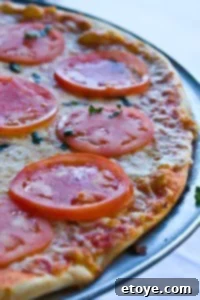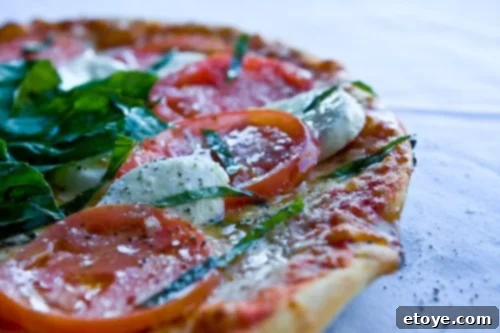Mastering the Culinary Frame: Unveiling the Art of Food Styling and Photography
Every dish tells a story, and as a food blogger and enthusiast, my goal is to capture that narrative in every photograph. Recently, I had the pleasure of revisiting one of our family’s most cherished Italian spots, Gio’s Pizza. It’s a local gem known for its authentic flavors and, more importantly for my kids, their incredible pizza. My visit wasn’t just for a meal; it was an opportunity to delve into the intricate world of food styling and photography for a monthly column I contribute to a community paper, featuring some of our town’s culinary highlights.
The journey from a casual snapshot to a compelling “money shot” is an art form in itself. It’s a meticulous process that goes far beyond simply pointing a camera and clicking. It involves careful preparation, strategic styling, and an understanding of how light interacts with food to evoke desire and taste through an image. My session at Gio’s was a perfect example of this transformation, proving that with a little know-how, anyone can elevate their food photography.
From Simple Snap to Stunning Shot: The Art of Food Photography at Gio’s
Capturing the essence of a dish requires more than just good ingredients; it demands a keen eye for detail and a strategic approach to presentation. What seems like a quick ten-minute photoshoot is, in reality, a carefully choreographed dance between food styling and photography. It started with a simple click, followed by subtle adjustments—repositioning a rogue tomato, drizzling a whisper of olive oil, sprinkling a touch more cheese, each action meticulously designed to enhance the visual appeal of the pizza.
One of the most crucial initial steps in any food photography session, especially in a restaurant setting, is thoughtful planning. To ensure an undisturbed environment and respect for the establishment’s regular operations, I always schedule my photoshoots during off-peak hours when the restaurant is quiet. This allows for ample space to set up, experiment with angles, and minimize distractions, both for myself and for the restaurant staff. It’s a simple courtesy that makes a significant difference in the quality of the shoot and the overall experience.

The evolution from a standard image to a truly captivating one is a testament to the power of deliberate styling. Imagine seeing an initial photograph of a delicious pizza, good but perhaps lacking that undeniable spark. Through targeted styling, this image can be elevated, showcasing the dish’s freshness, texture, and inherent appeal. The goal is to create a visual journey that transports the viewer, making them almost taste the flavors through the screen.

The Secrets of Food Styling: Elevating Your Culinary Photography
Achieving that coveted “money shot” in food photography often boils down to understanding a few core principles of food styling. My ten-minute session with Gio’s pizza didn’t involve baking the pizza or slicing ingredients from scratch, but rather making precise adjustments that utterly transformed its visual impact. The secret lies in enhancing inherent qualities and adding elements that stimulate the senses.
Texture, Contrast, and Sheen: The Holy Trinity of Food Photography
- Texture: A critical element that communicates freshness and depth. For the pizza, this meant strategically overlapping slices of tomato and mozzarella to create natural shadows and highlights. The addition of both whole and julienned basil leaves draped over the ingredients introduced varied textures and a sense of organic growth. Even fine details like freshly ground black pepper and grated Parmesan cheese added subtle, yet effective, textural “nubs” visible in macro shots.
- Contrast: Essential for making ingredients pop. This isn’t just about color contrast but also about light and shadow. Bright, vibrant toppings against a slightly darker base, or the crisp edges of crust against soft cheese, all contribute to a dynamic and engaging image.
- Sheen & Moisture: These elements are vital for making food look appetizing and fresh. A simple drizzle of quality olive oil not only adds a beautiful sheen but also suggests moisture and richness, making the dish appear more succulent and inviting.
The Power of Garnishes: Spices and Herbs
Spices and herbs are not just for flavor; they are powerful visual tools. Black pepper and fresh basil, for instance, were crucial additions to the Gio’s pizza. These elements allow viewers to instantly imagine the taste and aroma of the dish. The way the basil leaves naturally cascaded over the cheese and tomatoes created a sense of artful imperfection and organic beauty. It’s about making the dish look so fresh and aromatic that one can almost smell the herbs through the photograph.
Eliminating Distractions and Focusing the Eye
Equally important is what you choose to remove from the frame. Distracting elements, such as an unsightly pizza pan or an overly elaborate pedestal stand, were carefully moved out of sight. The goal is to ensure that the food itself remains the undisputed hero of the image, allowing the viewer’s eye to focus solely on the delicious details.
Harnessing Natural Light: Your Best Friend in Food Photography
My preferred lighting setup? Completely free and incredibly effective: natural window light. By simply selecting a table situated right next to a large window, I harnessed soft, diffused light that beautifully illuminated the pizza without harsh shadows. The directional quality of window light creates a natural gradient, adding depth and dimension to the food. It’s accessible, flattering, and often the best choice for food photography, proving that you don’t need expensive studio lights to capture stunning images.
These detailed notes on food styling and photography are born from countless hours of experimentation and a genuine passion for presenting food beautifully. I hope these insights are helpful for aspiring food photographers and bloggers alike. The feedback I receive from readers constantly reinforces the desire for more information on these topics, and I’m always thrilled to share what I’ve learned!
Behind the Scenes: My Blogging Journey and Web Design Insights (from Steamy Kitchen)
Beyond the lens, the world of blogging presents its own set of challenges and learning curves. As the traffic to Steamy Kitchen continued to grow, we hit a significant bottleneck with our shared hosting server. The situation demanded an immediate migration, which, as many bloggers can attest, is rarely a smooth process. Our existing WordPress theme, meticulously customized, refused to function correctly on the new server environment. This necessitated a rapid, intense 24-hour sprint to customize and implement a new theme, just to keep the site functional.
It was a whirlwind, to say the least. While there’s still plenty of work to refine the new design and iron out all the kinks, the site is operational, and that’s a victory in itself. One particular area that often causes headaches, and one I’ve learned a hard lesson about, is image hosting. Currently, some of my older thumbnails aren’t displaying correctly, a direct result of hosting photos externally on platforms like Flickr rather than directly on my own server.
The Imperative of Reliable Image Hosting for Bloggers
If I could offer one piece of advice to beginner bloggers, it would be this: DO NOT RELY ON EXTERNAL SERVICES LIKE FLICKR TO HOST YOUR BLOG’S PHOTOS. While platforms like Flickr offer convenience, they can become a significant pain point in the long run. Issues with hotlinking, changes in API, or even just slow loading times due to external server reliance can negatively impact your site’s performance, user experience, and SEO. Investing in robust, self-hosted image storage from the outset will save you countless headaches down the road, ensuring better control, faster loading speeds, and consistent image display across your site. Learning this the hard way taught me the paramount importance of owning and controlling your digital assets.
Essential Gear for Aspiring Food Photographers: Ghetto and Not-So-Ghetto
The topic of photography gear is vast, and I often get asked about the equipment I use. While I plan to dedicate an entire post to my “ghetto gear” alongside my more professional setup, here’s a quick overview of what I employed for the Gio’s Pizza shoot today.
My primary setup for serious shoots typically includes:
- Canon 40D (a sturdy, reliable DSLR)
- 24-70mm f/2.8L lens (a versatile workhorse for various food photography scenarios)
I know, these can be quite an investment! But here’s the crucial takeaway: you absolutely do not need the most expensive equipment to achieve stunning food photos. The exact same high-quality results can often be achieved with more budget-friendly alternatives, especially for beginners:
- Canon Rebel XT (an excellent entry-level DSLR, perfect for learning the ropes)
- 50mm 1.8mm lens (often called the “nifty fifty,” this prime lens offers incredible sharpness and beautiful bokeh at an unbeatable price, making it ideal for food photography)
The lesson here is simple: don’t get caught up in the “Gucci” pricey stuff unless you’re genuinely in a position to splurge. For most aspiring photographers, focusing on mastering technique, understanding light, and refining your styling skills with affordable gear will yield far more significant improvements than simply buying the most expensive camera. Creativity and a keen eye will always trump the latest high-end equipment. So, save your money, invest in learning, and let your passion for food photography shine through with whatever gear you have.
Embark on Your Culinary Photography Journey
Ultimately, the world of food photography and styling is one of endless discovery and creativity. Whether you’re a seasoned blogger or just starting to experiment with capturing delicious moments, the principles remain the same: thoughtful preparation, strategic styling, effective lighting, and a willingness to learn and adapt. The satisfaction of transforming a simple dish into a visual feast is immensely rewarding, and with the right approach, anyone can achieve breathtaking results. So, grab your camera, experiment with your ingredients, and start telling your own delicious stories!
